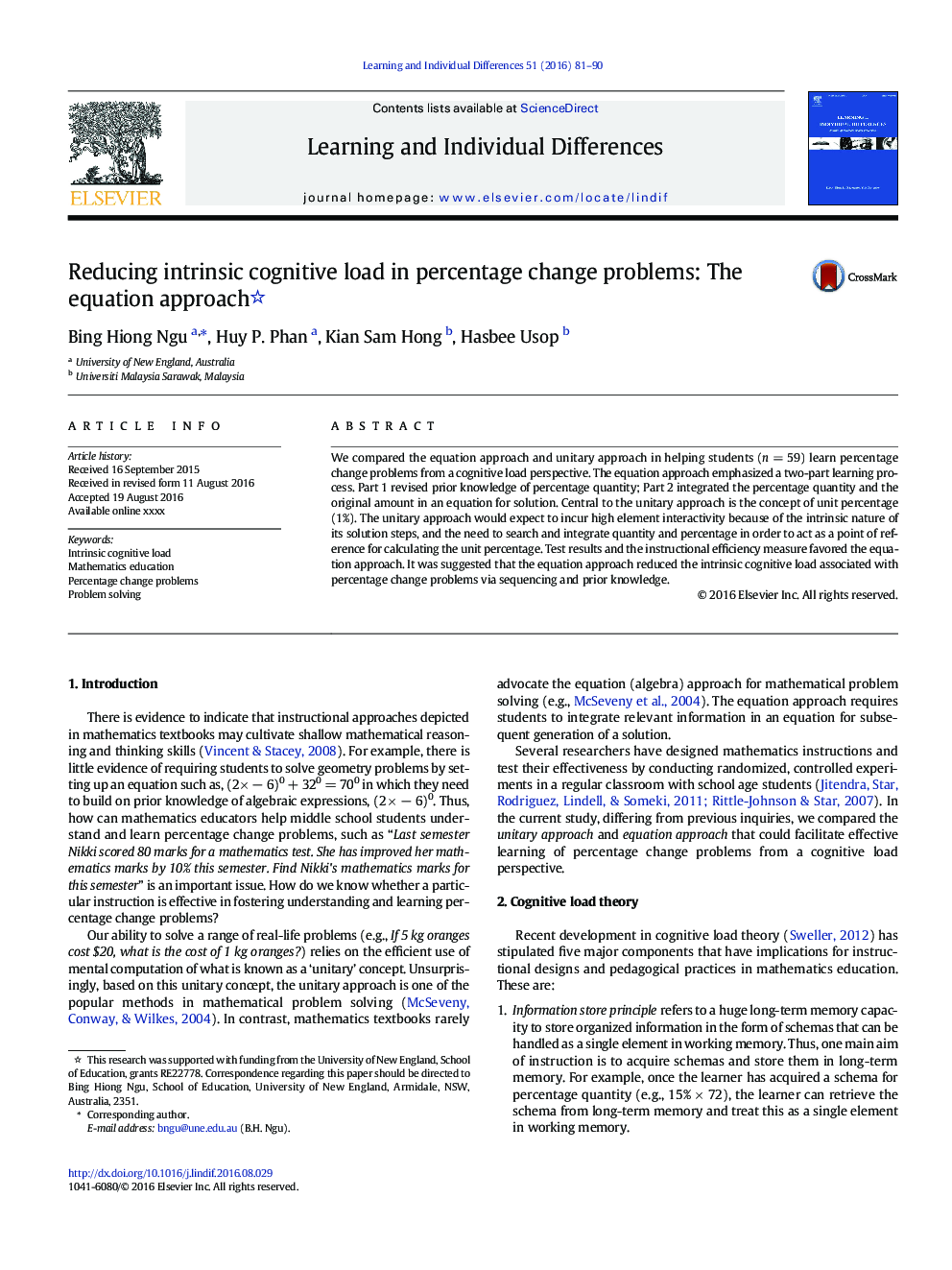| Article ID | Journal | Published Year | Pages | File Type |
|---|---|---|---|---|
| 4940101 | Learning and Individual Differences | 2016 | 10 Pages |
Abstract
We compared the equation approach and unitary approach in helping students (n = 59) learn percentage change problems from a cognitive load perspective. The equation approach emphasized a two-part learning process. Part 1 revised prior knowledge of percentage quantity; Part 2 integrated the percentage quantity and the original amount in an equation for solution. Central to the unitary approach is the concept of unit percentage (1%). The unitary approach would expect to incur high element interactivity because of the intrinsic nature of its solution steps, and the need to search and integrate quantity and percentage in order to act as a point of reference for calculating the unit percentage. Test results and the instructional efficiency measure favored the equation approach. It was suggested that the equation approach reduced the intrinsic cognitive load associated with percentage change problems via sequencing and prior knowledge.
Keywords
Related Topics
Social Sciences and Humanities
Psychology
Developmental and Educational Psychology
Authors
Bing Hiong Ngu, Huy P. Phan, Kian Sam Hong, Hasbee Usop,
